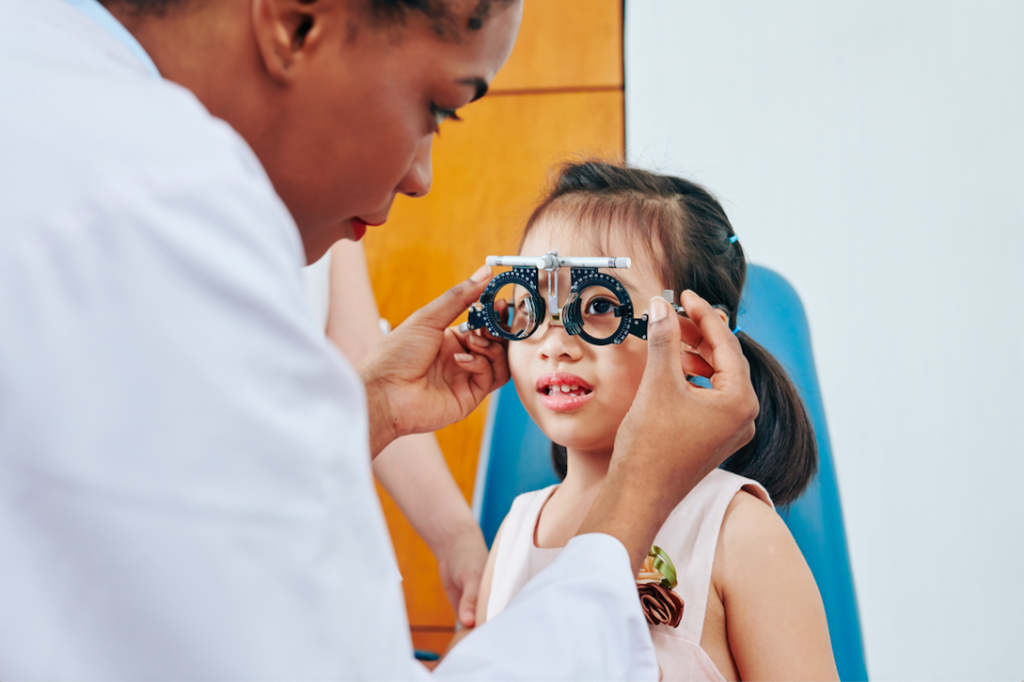Sunday Times Healthy Times
Eye Health And Safety
A study by The World Health Organization in 2017 estimated that 19 million children under the age of 15 have a visual impairment. “Around 63 per cent of these 19 million children are believed to have easily correctable errors that impact learning,” says optometrist Wendy Gray of Hilliar and Gray Optometrists. “Many children in South Africa have undiagnosed, untreated, but correctable visual problems that could be identified with early examination.”
According to research conducted in 2019 by the World Bank and the EYElliance, children with visual impairment lag behind their peers with learning outcomes. “It is estimated that 80 per cent of our sensory input from the world around us comes from vision,” says ophthalmic surgeon Dr Claire Cullen of KiDS EYES. “The first 1 000 days of a child’s life are extremely critical in their overall development, so early detection of a visual problem is of vital importance. The sooner a problem is detected, the better the outcome in most cases. Early detection enables early intervention, which optimises development of the brain’s visual centres, including vision and depth perception,” explains Cullen.
Common eye problems
“Refractive errors among children – including myopia (nearsightedness), hyperopia (farsightedness), and astigmatism – are common and need to be assessed in health evaluations of children to allow for early intervention,” says Gray. “Eye testing is an essential component of the assessment of normal development that all children should undergo.”
“Other common eye problems in children that cause visual impairment are strabismus or crossed eyes, and lazy eye or amblyopia,” says Cullen.
There is a critical period in childhood development during which vision errors need to be corrected to allow the eye and vision to develop and reach full potential. “An eye that remains untreated and unfocused can become lazy (amblyopia) and, if not dealt with timeously, may lead to a condition that is incapable of remedy, even with spectacles, at a later stage,” says Gray. “The American Optometric Association recommends that children have a comprehensive baseline eye examination at either 6 or 12 months, and then have an additional comprehensive eye test at least once between the ages of three and five.”
Many different types of corrective treatments are available for children with visual impairment. “Some of the treatment options include glasses, contact lenses, patching, and even surgery, depending on the cause,” says Dr Cullen.
Choosing the right prescription sunglasses
Summer is the perfect time to upgrade your sunglasses, which are so much more than just a fashion statement. “Sunglasses ensure that you are always protected from ultraviolet exposure, especially the harmful UVA and UVB rays, which can damage the eyelid, cornea, lens and retina of the eye,” says Tariq Khan, optometrist at Neovision Claremont.
UV protection
Choose sunglasses with 100 per cent protection against UVA and UVB rays that also block UV wavelengths up to 400 nanometres. “Replace sunglasses that are scratched as the damage to the protective coating can let in harmful UV rays,” says Khan. “Polarised lenses reduce glare bouncing off surfaces like water or roads, providing a better visual experience especially when driving and doing outdoor activities. Combined with 100 per cent UV protection, polarised lenses also provide the benefit of blocking horizontal UV rays.”
Big is better
When it comes to choosing the size of sunglasses, bigger is always better! “Oversized or wraparound sunglasses limit more UV rays from passing through the sides of your sunglasses and can also protect against cataracts and skin cancer around the fragile tissue of the eye,” says Khan.
Lens colour
Darker lenses are not necessarily better, but can be more suitable for certain conditions. “Depending on your needs, grey lenses reduce brightness without colour distortion, while amber lenses improve contrast and depth in lower lighting,” says Khan.
Price
Pricing matters for the quality of the frame – but not the lens. “As long as your sunglasses offer 100 per cent UV protection, they are good enough,” says Khan





